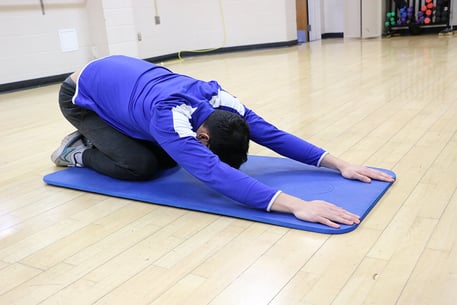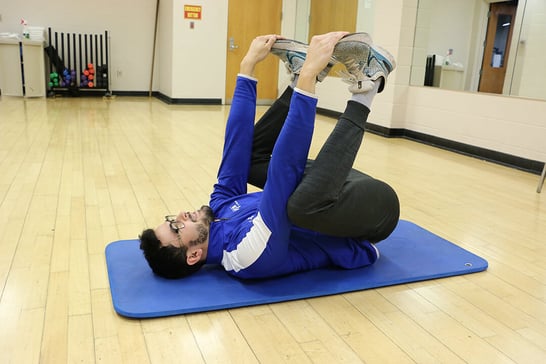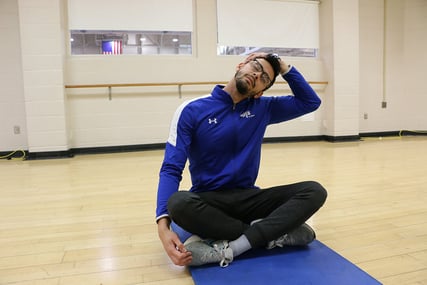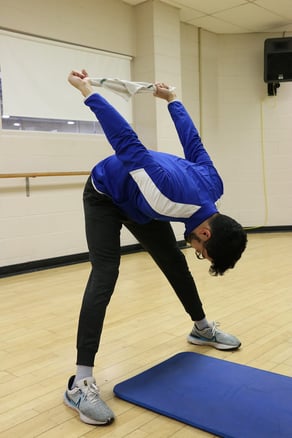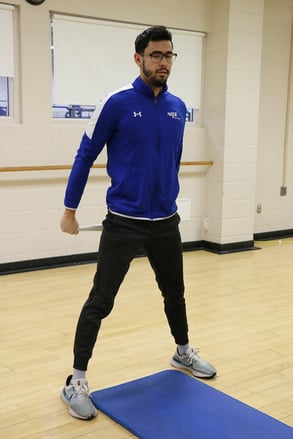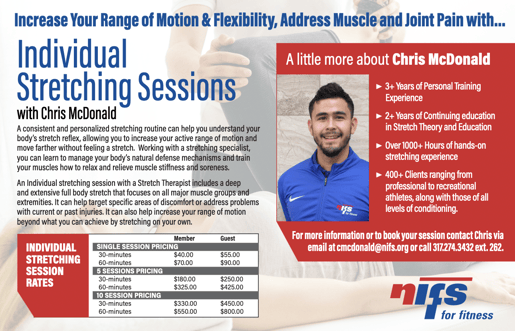 Starting your fitness journey is always an exciting step forward, but it is essential to make sure you are listening to your body and prioritizing your recovery and self-care. Many people tend to neglect their bodies' needs and push themselves past their limits, which isn’t necessarily a bad thing. The importance of recovery and self-care play a crucial role in ensuring your long-term success in the gym, and one mistake can lead to a possible injury that can take away and/or limit that progress.
Starting your fitness journey is always an exciting step forward, but it is essential to make sure you are listening to your body and prioritizing your recovery and self-care. Many people tend to neglect their bodies' needs and push themselves past their limits, which isn’t necessarily a bad thing. The importance of recovery and self-care play a crucial role in ensuring your long-term success in the gym, and one mistake can lead to a possible injury that can take away and/or limit that progress.
The Importance of Recovery
Recovery is one of the most important aspects of any fitness regimen. Giving yourself enough time to recover helps your body repair and strengthen itself. Without giving the proper recovery your body needs can lead to a higher risk of fatigue, decreased performance, and increased risk of injuries. Here are a few key components to ensuring you have an effective recovery period:
- Rest Days: Incorporating rest days is essential in allowing your body to heal and grow your muscles. You typically want to aim between 1-3 times a week depending on your fitness level and intensity for your workouts, so it may vary from person to person.
- Sleep Quality: Quality of sleep is a must for effective recovery. Anywhere between 7-9 hours a night is optimal to support muscle repair, hormone balance, and overall mental and physical health. Maintaining a consistent sleep routine will help manage your body's recovery each day.
- Hydration and Nutrition: Proper hydration and nutrition play a significant role in your body’s growth and recovery. Ensuring that you are drinking plenty of water during the day, and focusing on a balanced diet with protein, healthy fats, and complex carbohydrates will keep your body properly replenished and aid in muscle growth and repair.
Self-Care Practices
- Mobility and Stretching: Practicing stretching and focusing on mobility work regularly can help enhance flexibility, reduce muscle soreness, and prevent injuries. Incorporating dynamic stretching before workouts and static stretches after workouts helps maintain your muscle's elasticity and joint health. This can help with knee pain, lower back issues, and posture over time.
- Mindfulness: Mental wellness is just as important as physical wellness. Practicing mindfulness can help reduce stress, improve your focus, and enhance your overall well-being. Focus on relaxing the mind for a few minutes a day to help clear your head, such as deep-breathing exercises to calm the mind and body. This can be paired with your static stretches to help your mind and body at the same time.
- Active Recovery: On rest days, engaging in active recovery activities such as swimming, biking, yoga, or walking can help promote blood flow, reduce muscle soreness, and aid in muscle recovery without straining your body. Ensure that you are keeping a low intensity when engaging in these activities.
Prioritizing your recovery and self-care can play an important role in enhancing your performance, maintaining a balanced lifestyle, and helping prevent injuries. These practices will not happen overnight and will take dedication and time to achieve but will help you in the long run. Embrace, motivate, and stay consistent, and embark on your fitness journey prepared and ready to take on any challenge.
If you're unsure where to start or want to ensure you have the right balance between your fitness goals and recovery, or if you're simply looking to work with a professional, NIFS offers personal trainers who can help guide you every step of the way. Take the next steps with the support you need!


 Starting school can be exciting and overwhelming. Whether it is meeting new people, trying to manage a demanding class schedule, handling new responsibilities, or facing academic pressure, balancing everything can seem challenging. Many students also want to focus on their personal fitness goals but struggle to find time to manage with everything else going on. However, finding a balance between academics and health can be extremely beneficial for you, both physically and mentally. Here are some tips on how to manage both your academics and fitness goals.
Starting school can be exciting and overwhelming. Whether it is meeting new people, trying to manage a demanding class schedule, handling new responsibilities, or facing academic pressure, balancing everything can seem challenging. Many students also want to focus on their personal fitness goals but struggle to find time to manage with everything else going on. However, finding a balance between academics and health can be extremely beneficial for you, both physically and mentally. Here are some tips on how to manage both your academics and fitness goals. 
